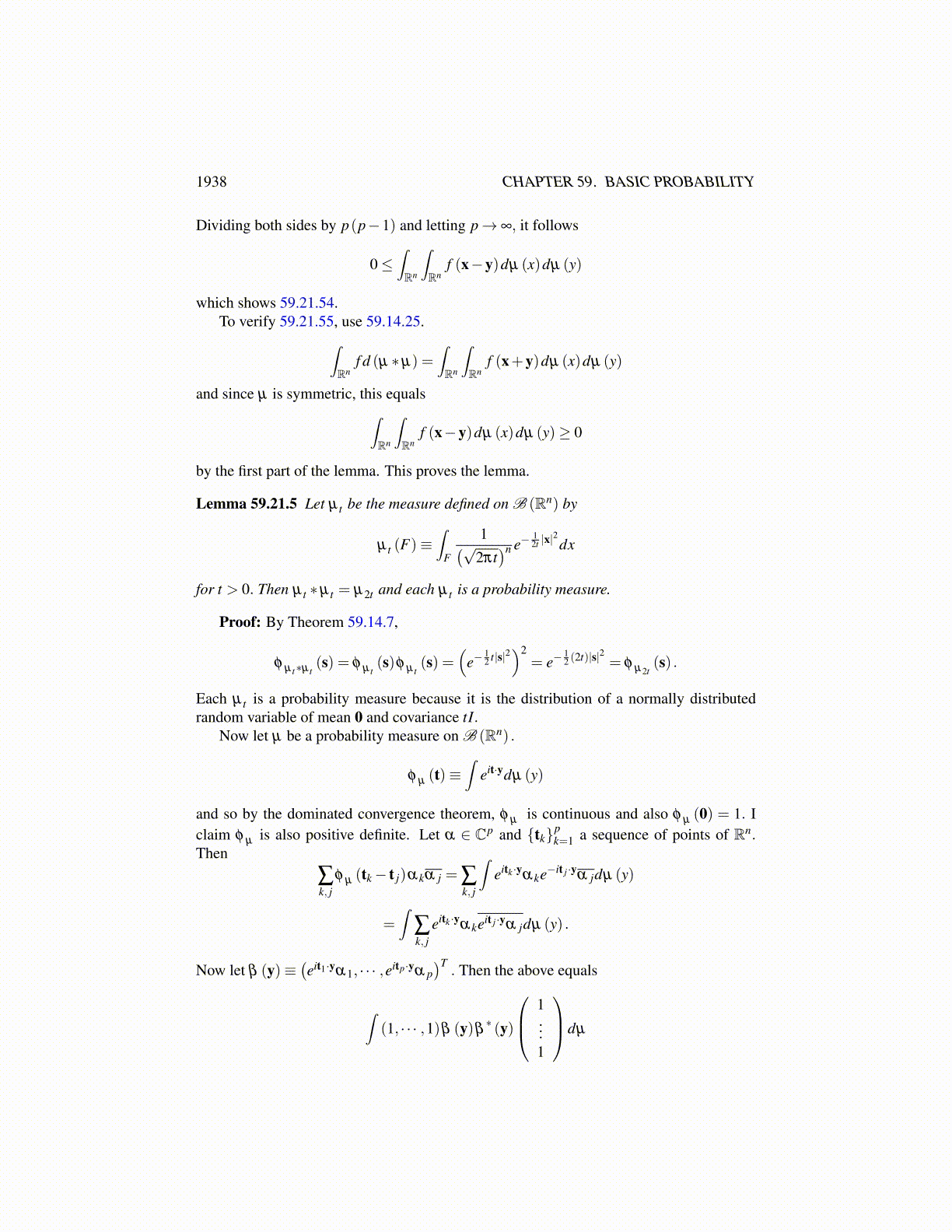
1938 CHAPTER 59. BASIC PROBABILITY
where M∗ has zeros down the main diagonal and zeros above the main diagonal. Alsotaking the adjoint of the given equation for M, it follows that for all α,
α∗M∗α = 0
Therefore, M+M∗ is Hermitian and has the property that
α∗ (M+M∗)α = 0.
Thus M+M∗ = 0 because it is unitarily similar to a diagonal matrix and the above equationcan only hold for all α if M+M∗ has all zero eigenvalues which implies the diagonal matrixhas zeros down the main diagonal. Therefore, from the formulas for M,M∗,
0 =U
0 0
. . .∗2 0
+
0 ∗1. . .
0 0
U∗
and so the sum of the two matrices in the middle must also equal 0. Hence the entries ofthe matrix in the middle in 59.21.51 are all equal to zero. Thus M = 0 as claimed.
Definition 59.21.2 A Borel measurable function, f : Rn → C is called positive definite ifwhenever {tk}p
k=1⊆Rn,α ∈Cp
∑k, j
f (t j− tk)α jαk ≥ 0 (59.21.52)
The first thing to notice about a positive definite function is the following which impliesthese functions are automatically bounded.
Lemma 59.21.3 If f is positive definite then whenever {tk}pk=1 are p points in Rn,∣∣ f (t j− tk)
∣∣≤ f (0) .
In particular, for all t, | f (t)| ≤ f (0) .
Proof: Let F be the p× p matrix such that
Fk j = f (t j− tk) .
Then 59.21.52 is of the formα∗Fα = (Fα,α)≥ 0 (59.21.53)
where this is the inner product in Cp. Letting [α,β ]≡ (Fα,β )≡ β∗Fα, it is obvious that
[α,β ] satisfies[α,α]≥ 0, [aα +bβ ,γ] = a [α,γ]+b [β ,γ] .
I claim it also satisfies[α,β ] = [β ,α].